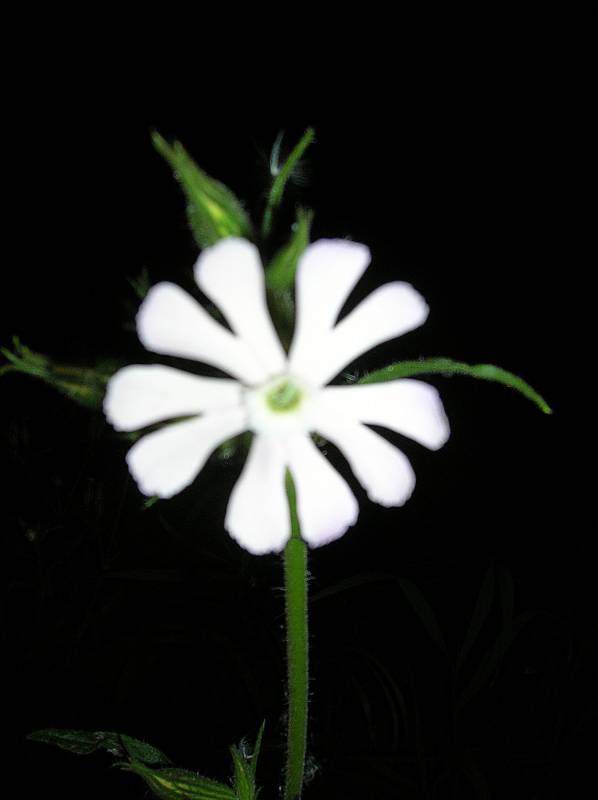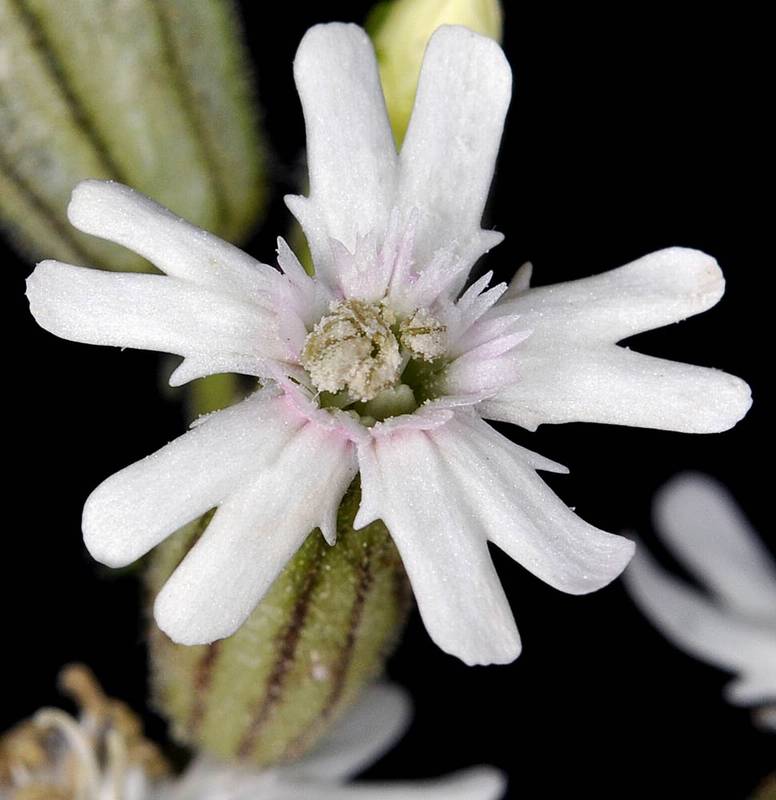Silene noctiflora
Silene parryi
night-flowering catchfly
Parry's, Parry's silene
Leaves opposite, ovate-lanceolate to elliptic-oblanceolate, 5-12 cm. long and up to 4 cm. broad, the lower ones long-petiolate, the upper sub-sessile.
Leaves mostly basal, linear-oblanceolate, 3-8 cm. long and 4-10 mm. broad, long-petiolate;
cauline leaves 2-3 pairs, narrower but not shorter than the basal leaves.
Flowers few to several in an open inflorescence, the pedicels 3-30 mm. long;
calyx 5u00e2u20acu201clobed, tubular, 15 mm. long at flowering, much enlarged in fruit, 10-nerved, the lobes lance-linear, 5-9 mm. long;
petals 5, white to pinkish, glabrous, the claw 12-25 mm. long, auriculate above, the blade 7-10 mm. long, bi-lobed less than half the length;
blade appendages 2, 0.5-1.5 mm. long and broad;
stamens 10;
styles 3. Flowers open at dusk.
Flowers few, in a tight terminal cluster with 1-2 lower on the stem;
calyx 5-lobed, tubular, inflating in fruit, 12-16 mm. long, glandular-hairy, with 10 prominent nerves;
petals 5, white, or greenish or purplish tinged; the claw about 11 mm. long, broadened above;
blade about 5 mm. long, bi-lobed to mid-length, each margin with a shorter lateral tooth;
blade appendages 2, 1.5-2 mm. long and broad;
ovary stalk 3 mm. long;
stamens 10;
styles usually 3, exerted.
Capsule 3-celled.
Capsule 1-celled.
Silene noctiflora
Silene parryi
- Local floras:
BC,
CA,
OR,
WA
- Local Web sites:
CalFlora,
CalPhotos,
Flora NW,
PNW Herbaria
WildflowerSearch
iNaturalist (observations)
USDA Plants Database
- LBJ Wildflower Center
- SEINet
- Plants of the World Online
- Encyclopedia of Life
- Wikipedia
- Google Image Search



